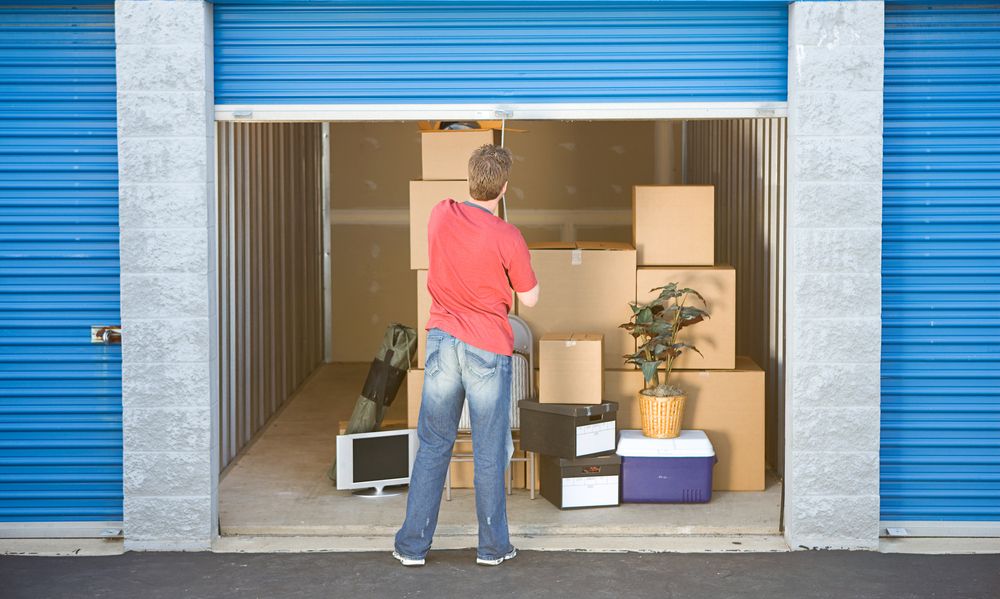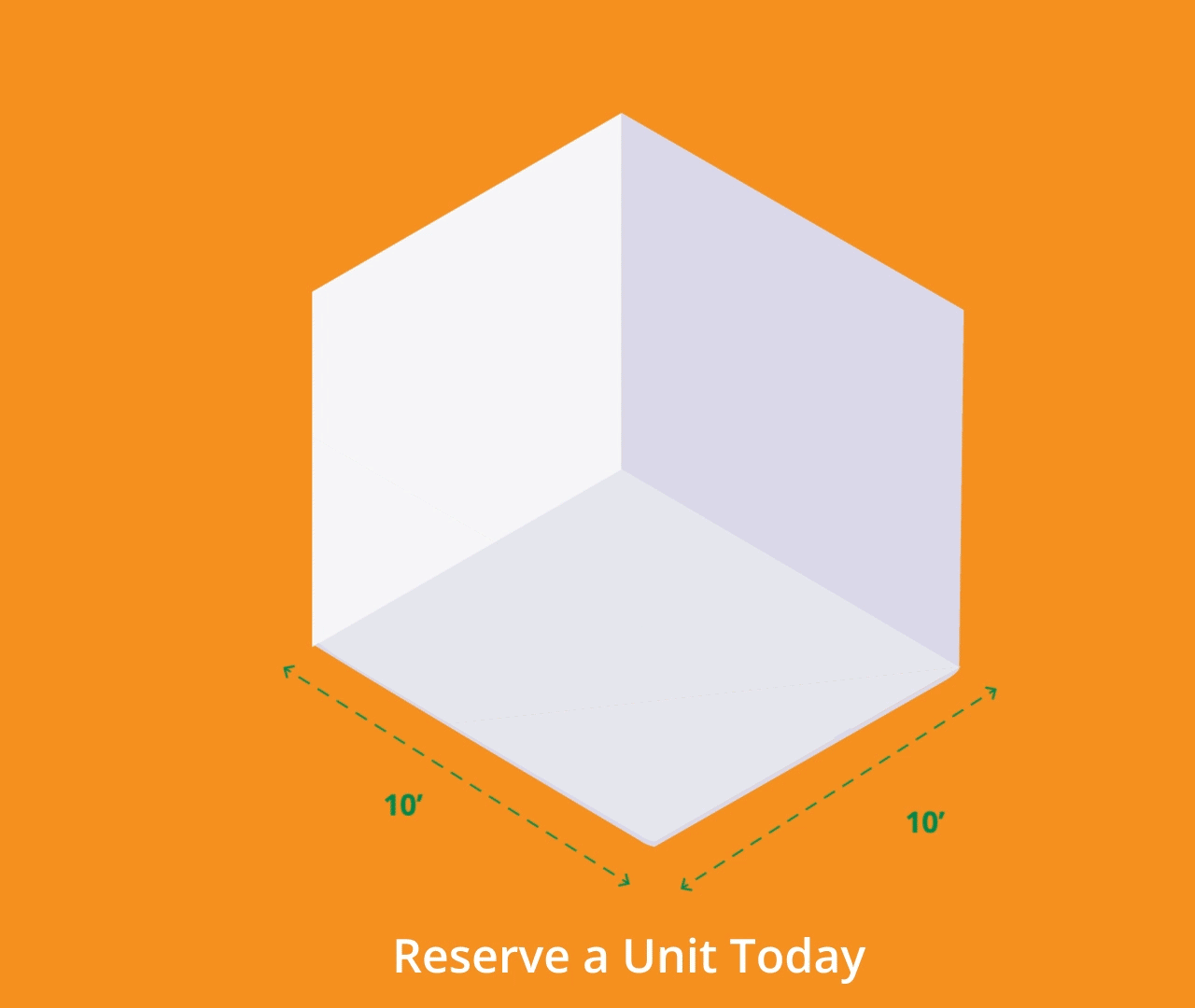-

How to Store Things in a Storage Unit
Moving your belongings into storage? You’ll want to be sure to pack them properly to ensure that they stay in great condition. You’ll also want to use storage space as efficiently as possible to get the biggest bang for your buck. In this guide, our storage experts here at Stor-It discuss how to store things in a storage unit the right way. We’ll cover topics including how to pack and wrap items, how to utilize space, and how to keep your storage unit clean. We’ll also provide helpful resources and links to our very own storage units and packing supply retailers located in Boise, Idaho and beyond.
Choose the Right Storage Unit
There are several steps to take before even starting to put your things in any storage unit. The first of these steps is choosing the right type of storage for your needs. Take care to choose a storage facility in your area with ample amenities, friendly staff, and well-maintained grounds. Check out our Space Estimator to determine which storage unit size will work best for you. In most cases, traditional storage will do just fine, but if you are storing particularly temperature- or humidity-sensitive items you may want to consider reserving a climate-controlled storage unit.
Clean Your Belongings Before Storing
Upon obtaining your storage unit, give your own belongings (especially upholstered items) a cleaning before bringing them into storage. Furniture, clothing, and kitchen items that don’t see frequent use can bring in bugs, mold, and other foreign substances into a storage unit. Over time, these microscopic storage invaders can cause major problems. Cleaning your belongings and your storage unit before you begin storing can go a long way.
Gather Your Packing Materials and Use Uniform Box Sizes
Packing is a crucial step in any storage process. To ensure that your packing goes as smoothly as possible, prepare by gathering proper packing supplies. Cushioning materials such as bubble wrap and newspaper are crucial for keeping fragile items in excellent condition during transportation and while they are in storage. Other supplies to gather include packing tape (not duct tape or painter’s tape), packing peanuts, and boxes.
Take an Inventory of Your Items
Before loading your items into boxes, and after giving them each a thorough cleaning, take a comprehensive inventory of all belongings you plan on storing. This will help you keep track of everything once you begin the packing and storing process. That way, you won’t have to go frantically tearing through your home or your storage unit in search of a single long-lost item. Use a spreadsheet or a good old-fashioned clipboard to take stock of everything you’re storing before beginning the packing and storage process.
Take Everything Apart
One excellent rule to follow when packing items and putting them into storage is to take apart all items that can be easily disassembled. Bookshelves, tables, and chairs with detachable legs, bed frames, and other items designed to be dissembled should be taken apart before being stored. This will help prevent damage and will make fitting these items into smaller storage spaces much easier.
Wrap Fragile Items
Packing and storing fragile items? It’s important to wrap them in bubble wrap, newspaper, or both materials before placing them in packing boxes. This will help prevent unwanted cracks, chips, and other damages. (For particularly exposed parts of fragile items, we recommend double or triple-wrapping to create more stability and to prevent against breakage.) You can also pack smaller fragile items among clothes or other soft belongings for added cushioning.
Pack Categorically and Always Label Your Boxes
In line with inventorying your items before packing, it is also important to label your boxes and to pack categorically once you begin filling them. To “pack categorically” simply means to sort your items based on attributes like size, function, and fragility when loading them into boxes. For example, it may be a good idea to put all of your kitchen things into one box. Remember to not put too much weight on top of fragile items like your fine china. Instead, you cushion them with things like dishtowels, placemats, or other soft items. Thinking categorically will not only keep your items in good condition—it will save you hours of unpacking and sorting time in the future.
Stack Based on Fragility, Store Based on Accessibility
Once you have everything packed, it’s time to move your boxes and belongings into your storage unit. During this process, you’ll want to do everything you can to keep your items in great condition while maximizing space in your unit. To keep items from breaking and boxes from crushing one another, stack based on fragility and weight. Start with heavier, more durable items and boxes on the bottom, and move up as belongings get lighter and more fragile. Try not to precariously perch any breakables, and always keep heavy and/or valuable items where you can easily grab them.
This leads us to our second principle of this section: store based on accessibility. As you’re putting items into your storage unit, make sure to keep the items you think you might be removing regularly as easy to access as possible. Fill your storage unit from the walls moving in, and always leave a path (or two) for yourself. This will help you access boxes when you go to remove items from your unit.
When in Doubt, Ask for Assistance
Packing up your items and moving them to storage isn’t always the easiest task to take on alone. Whether you’re dealing with valuables, heavy items, or just a veritable boatload of belongings, it may be a good idea to ask for assistance during the storage process. Reputable storage companies like ours here at Stor-It can direct you to the proper packing materials and give you general storage advice for your unit and belongings. We can also point you in the right direction when choosing a moving company to lift those heavy items and furniture like Cross Town Movers. Don’t be afraid to ask for help — you might end up with broken items or an unwanted injury otherwise. When in doubt, always ask for assistance during the packing, moving, and storage process.
Learn More and Reserve Your Unit at Stor-It
Want to learn more about how to store things in a storage unit? Visit our Blog and our Packing and Storage Tips page for extra information on all things storage. Ready to store your items with our team here at Stor-It? Contact us to schedule a tour and to reserve unit at one of our many Idaho locations!
-
Receive Updates
Proudly Serving Idaho's Finest












